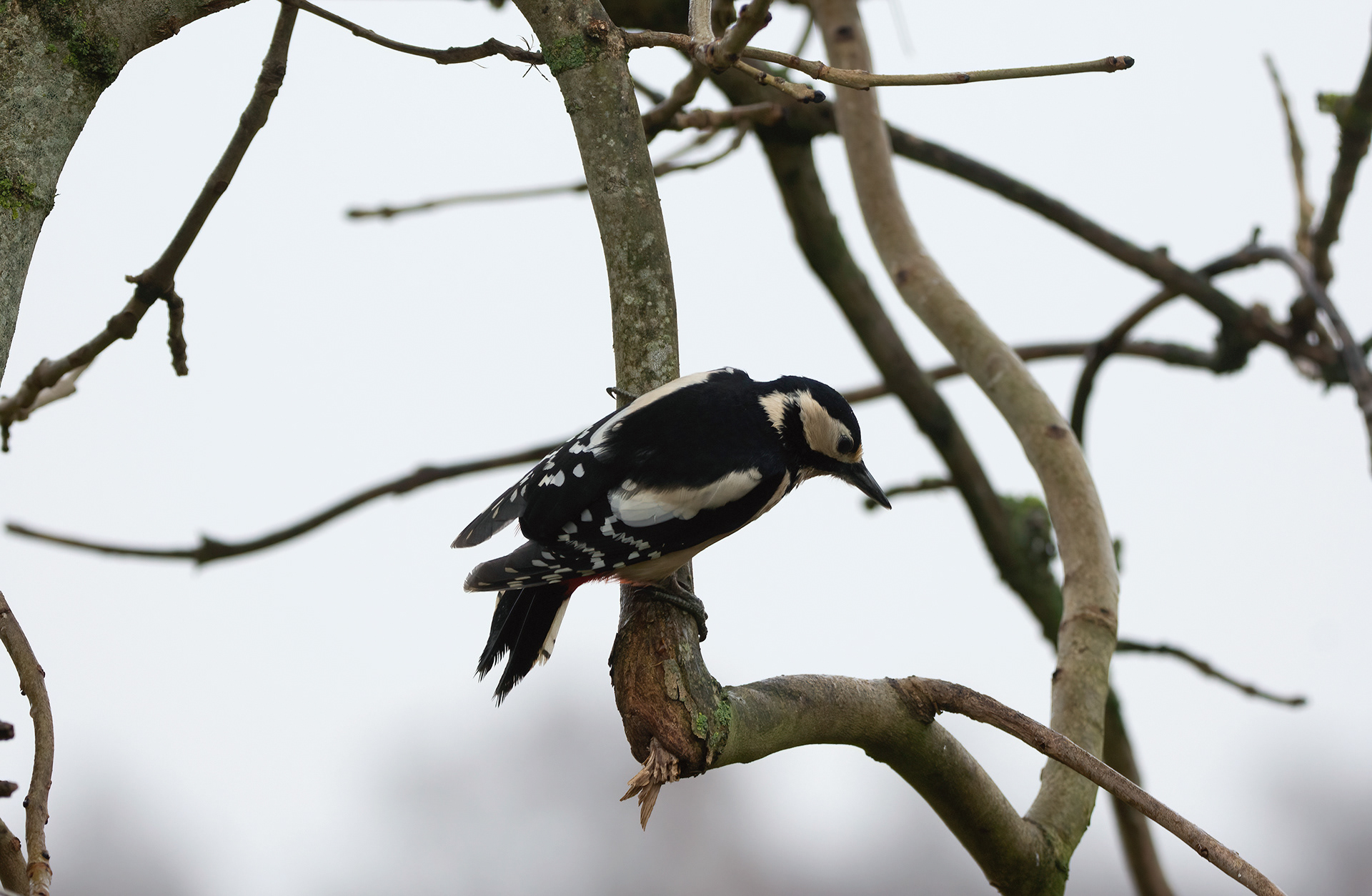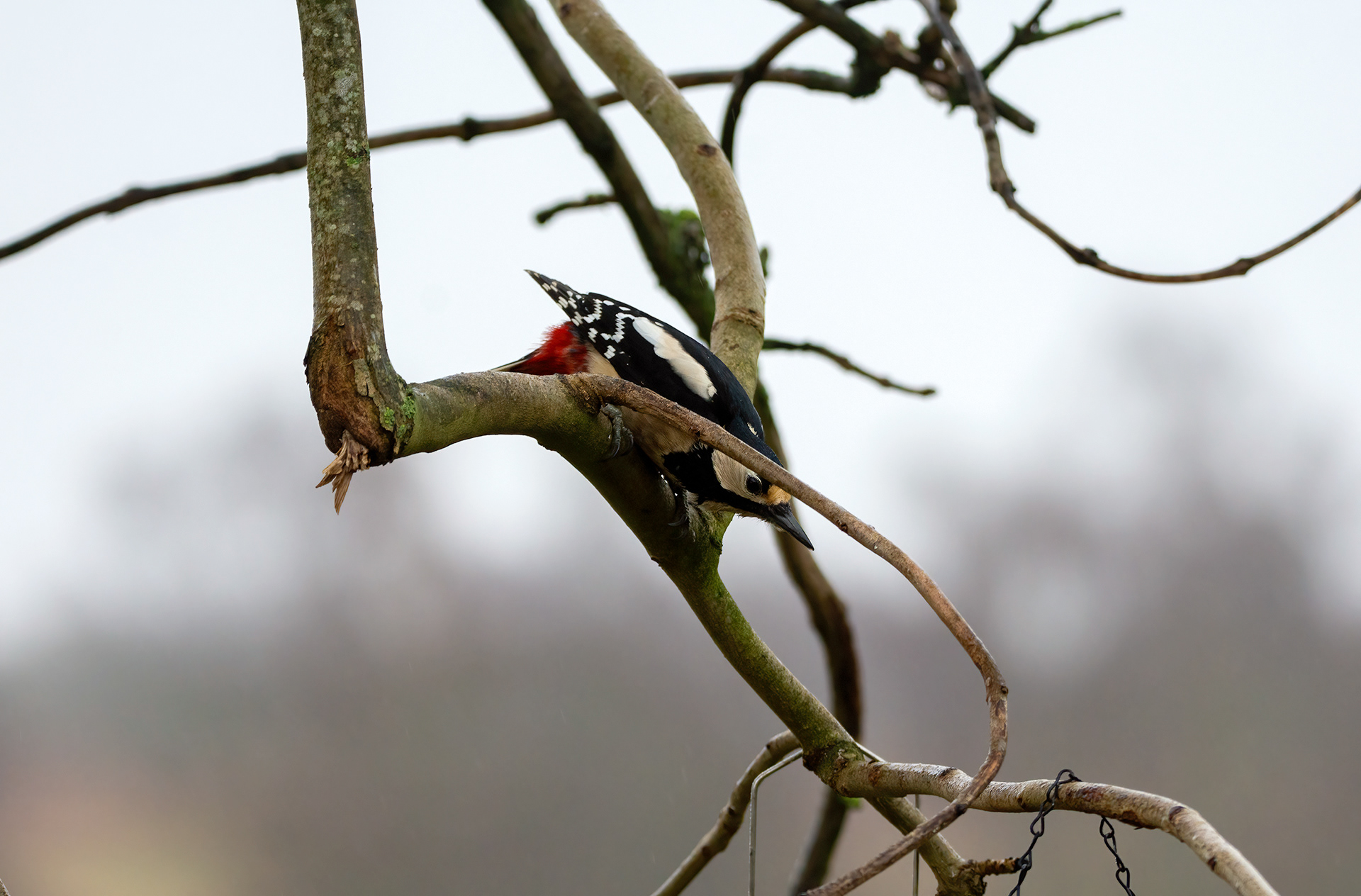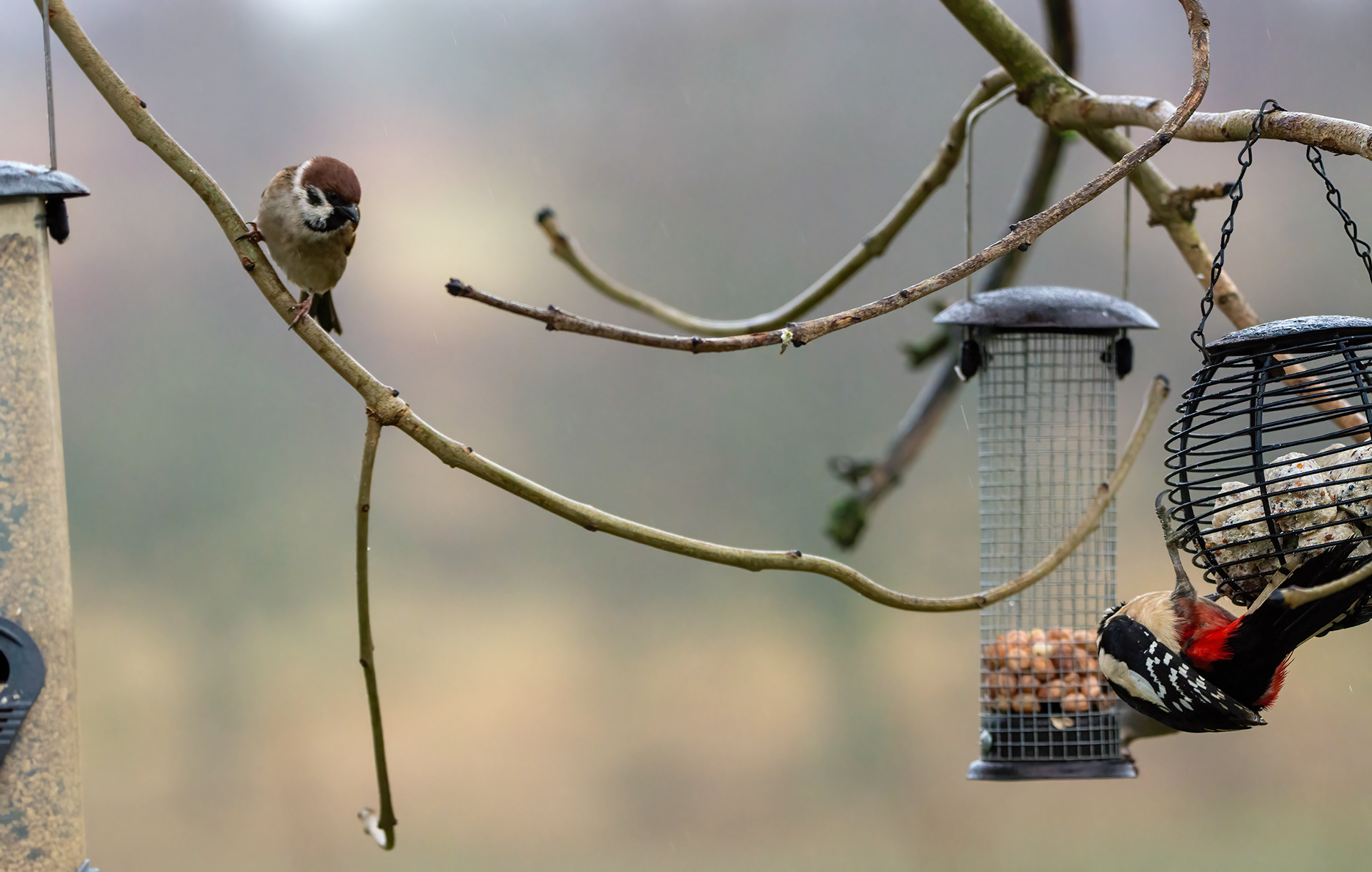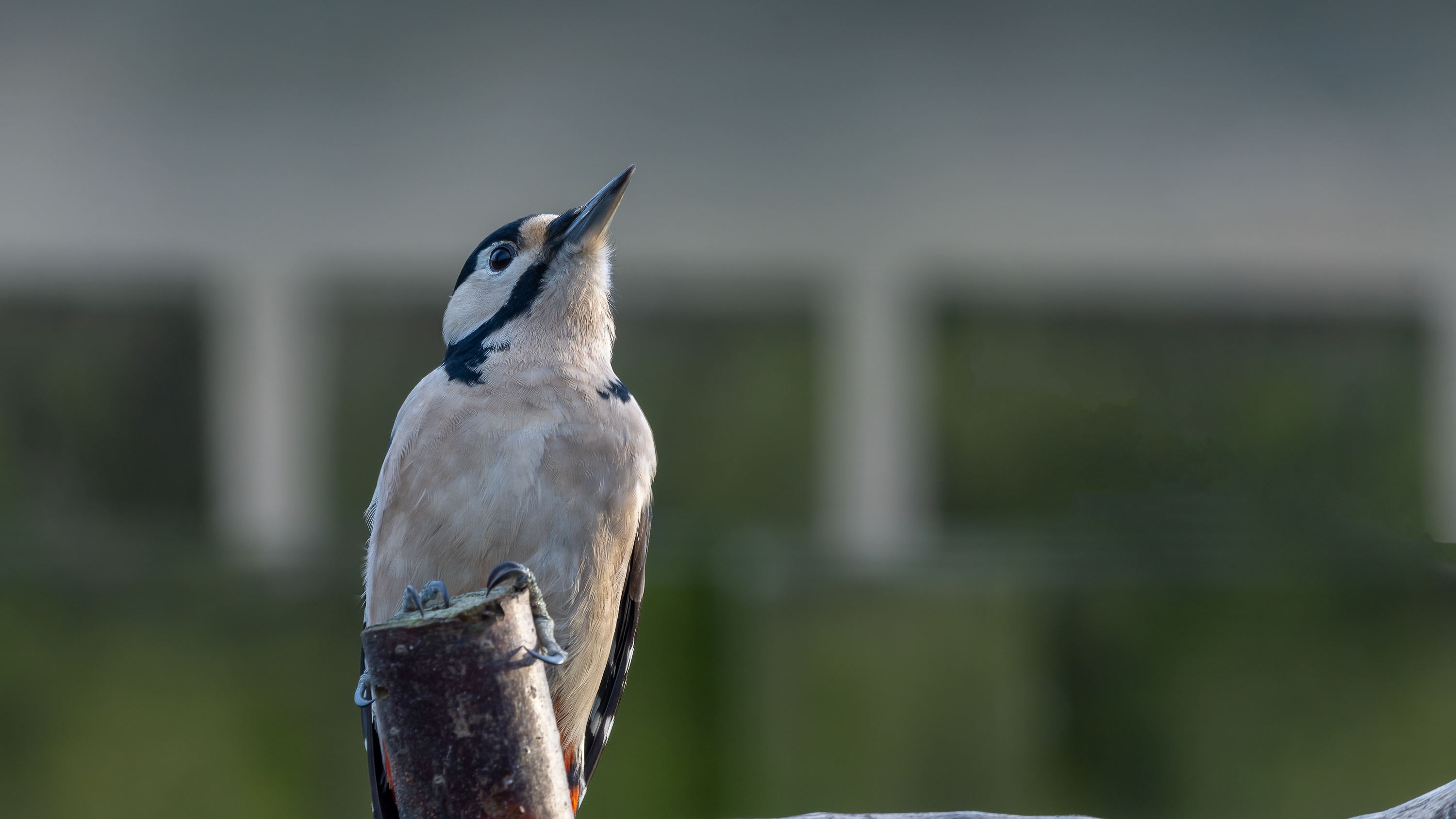I have just realised I have become blasé about the Great Spotted Woodpeckers that visit our feeders. How is that possible? Beautiful birds that visit almost every day and many people never see at all and I'm ignoring them now????
So, January 2024.
I've begun to believe that we have more than one pair visiting now. I think last year's adults are coming back along with a couple of their young from then as well. There have been a few rows out there on the trees, mostly between males.
For those that don't know, I sit at my Mac just inside a window which looks out at an Ash tree and our feeders and that's where I get to see our garden birds.
I don't see all the birds here, we have a hedge running down one side of the garden and that attracts a lot of other species which feed out in the fields and hedgerows so I do have to get up and move around to see those :)
January 25th and a bird caught my eye working its way through the branches.

Eyeing them up

Working down the branches

Eye on the prize

Made it
A female working her way towards the suet feeder, watched by a Tree Sparrow
They can be great fun to watch, they almost play hide and seek around the tree trunk, peeping round to check where you are.
I named the bird in the sequence above as a female, here is a male showing off his red neck patch, the female doesn't have that red patch.
Male facing camera
Of course, if you can't see the back of the head ..... I know this is a male because I had a few other shots that weren't as good and they showed patches of red.
And there is the same male perching above a feeder and checking on me. I can tell they see me by the eye contact so I try to avoid quick movements when I'm trying to capture an image.
I've also noticed the condition of some of the visiting birds, like how dirty the breast is and how messy the feathers on the head, signs they're working on a nest?
Breeding starts from mid May onwards. They nest in a hole in a tree trunk and lay from three to eight white eggs. Incubation takes sixteen days and is carried out mainly by the female, with some assistance from the male. Both parents rear the offspring.
Sociable male
I don't know about all GSW but our birds are reasonably sociable, there are some birds they will not be around but the smaller garden birds don't bother them, as you can see above, Long-tailed Tits and Tree Sparrows sharing the feeders.
Something I kept an eye out for early in the year was two birds arriving, kind of checking to see if the adults from last year will come back, I have no way of knowing if it is them but they're very familiar with the feeders and me being here.
Male & female at the feeders with others
I detest the idea of just taking yet another GSW photo so I'm always looking for a different shot and one way of doing that is in different light and weather.
Above is a male just sitting enjoying the setting sun.
Male in low evening light
I remember that January ended with a wild windy day
Blowin' in the wind
I thought I'd made a short video of this windy day but I've either deleted it or it was awful so, on to February.
Edit: I found my video but I'm only going to link to it here, it was a pretty wild, windy day so it can be difficult to focus on the poor bird swinging to and fro.

